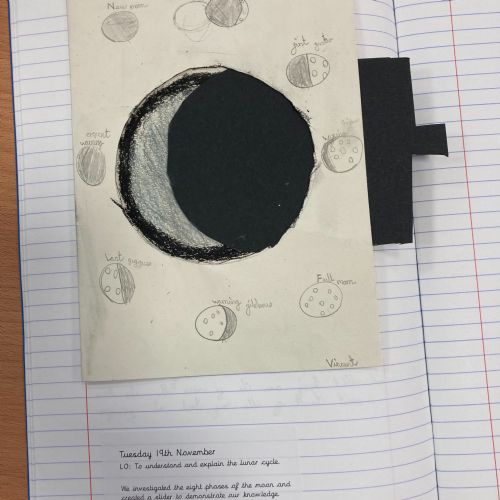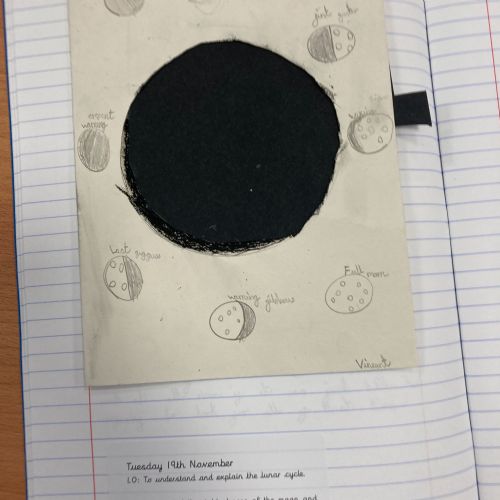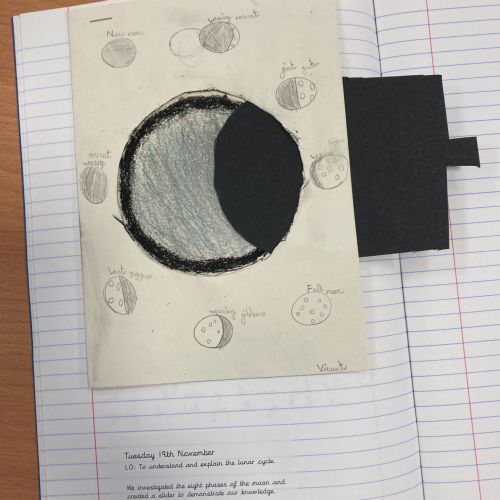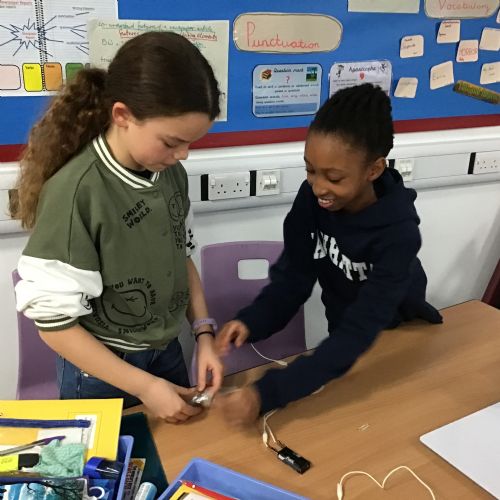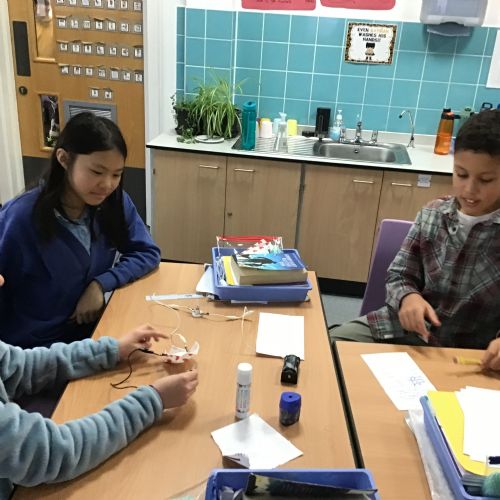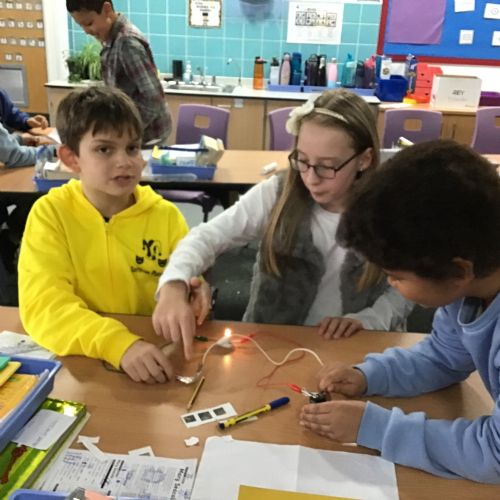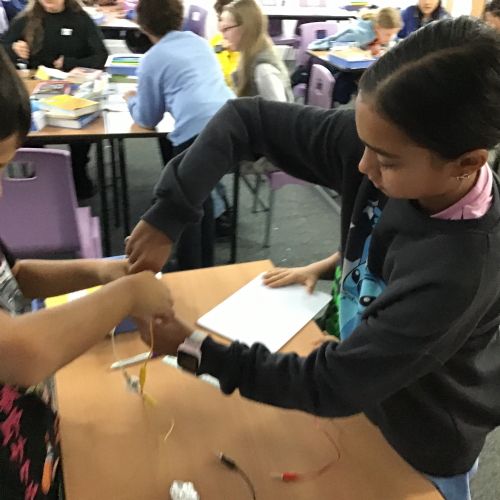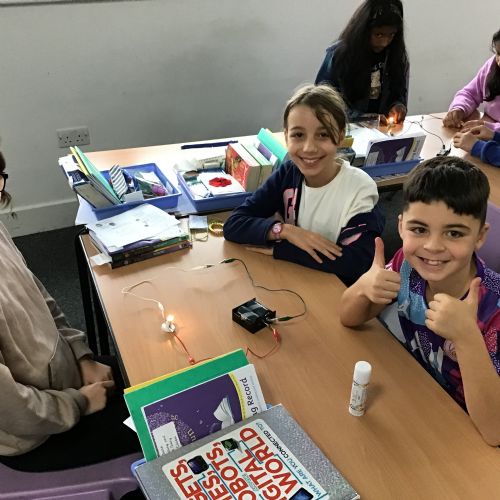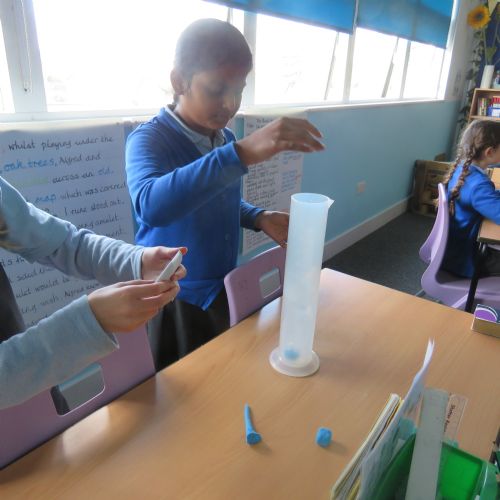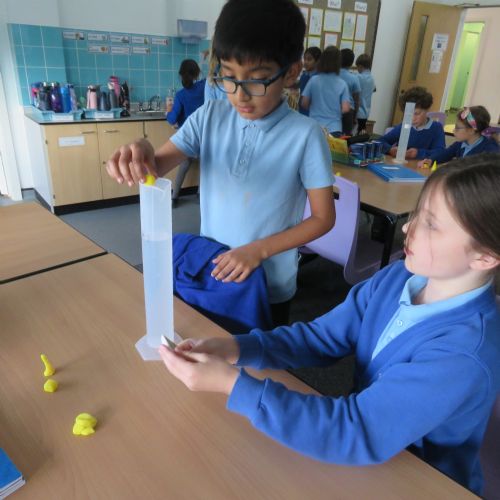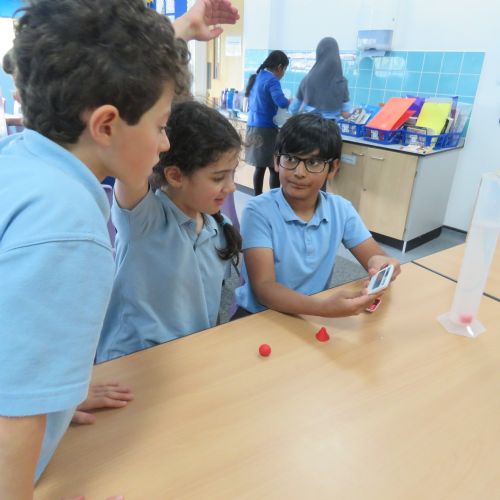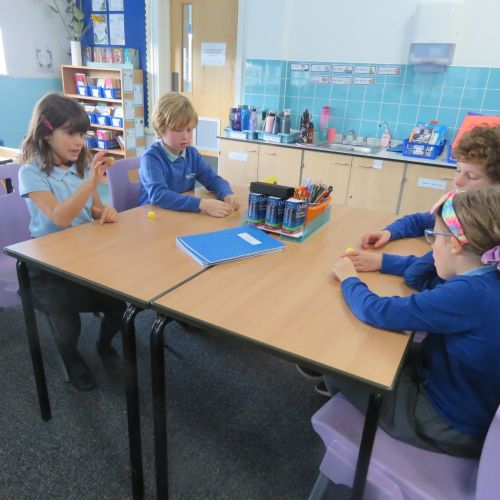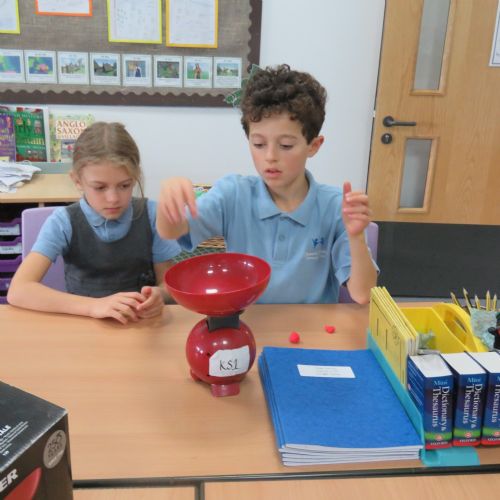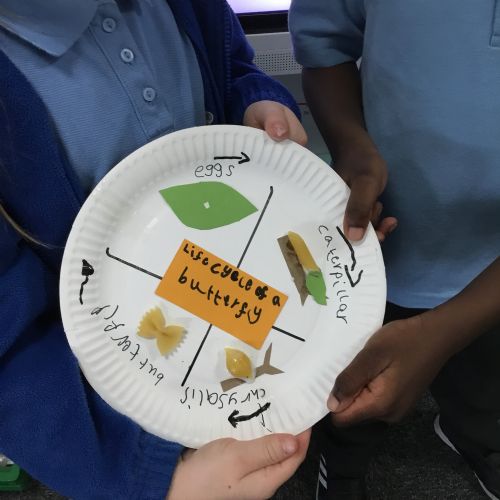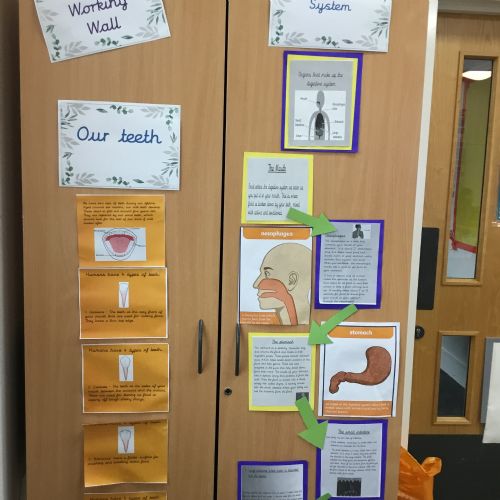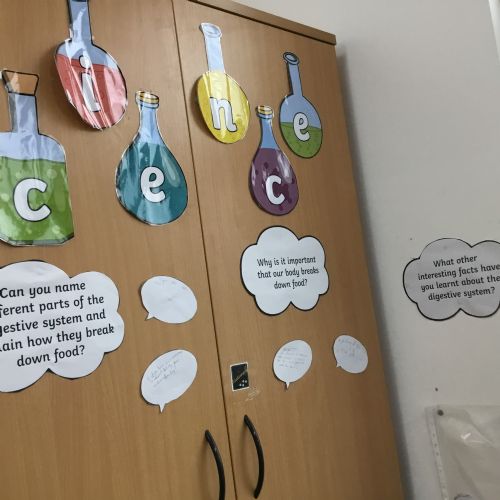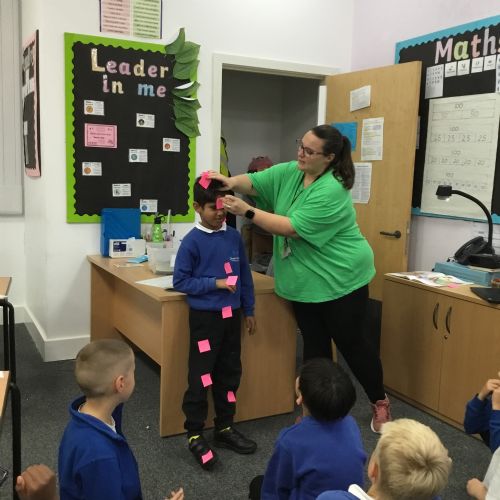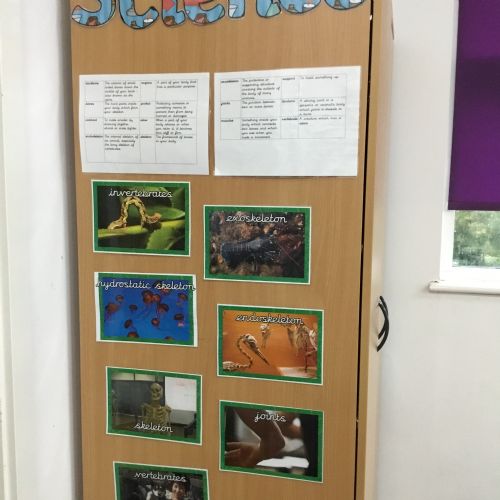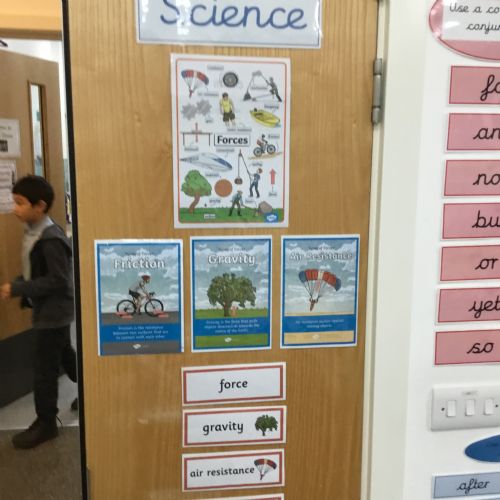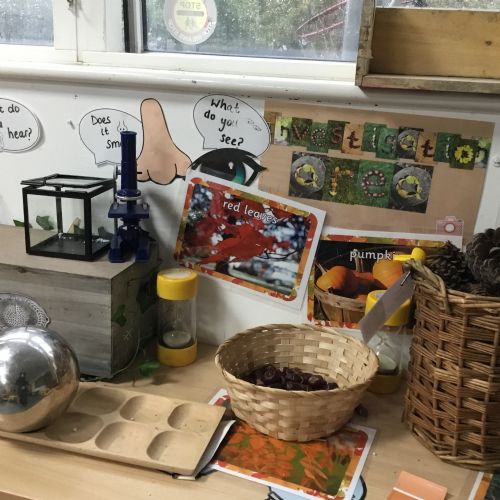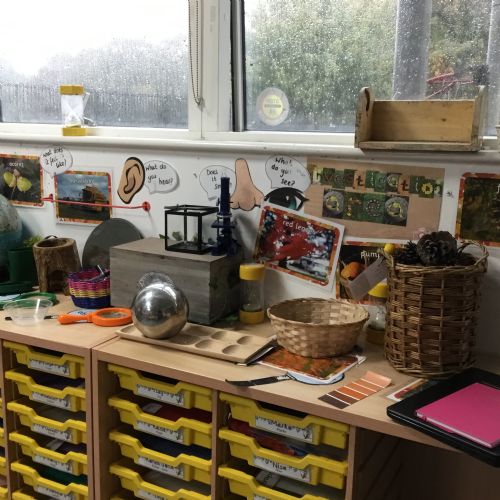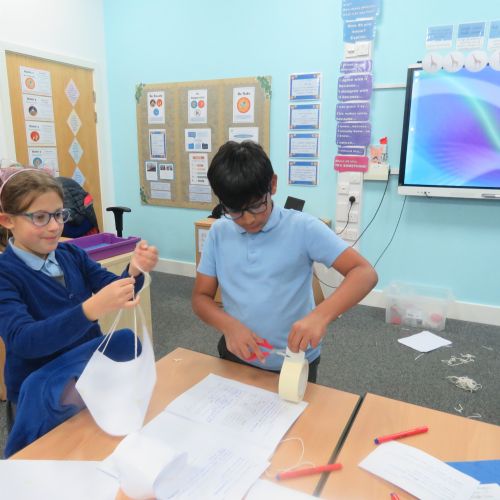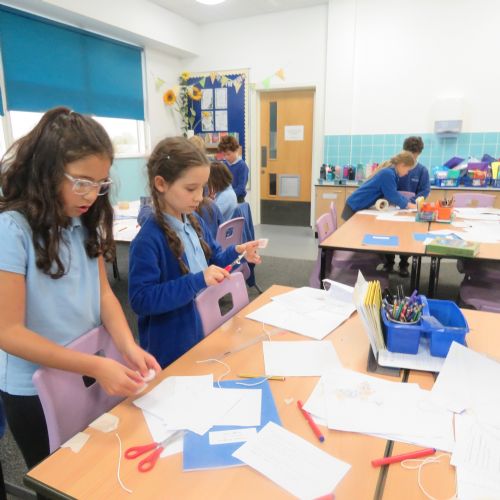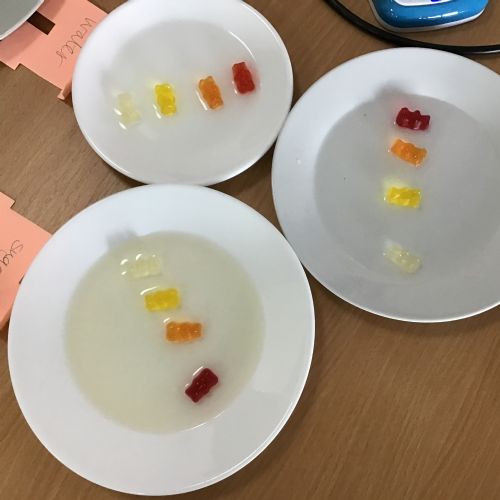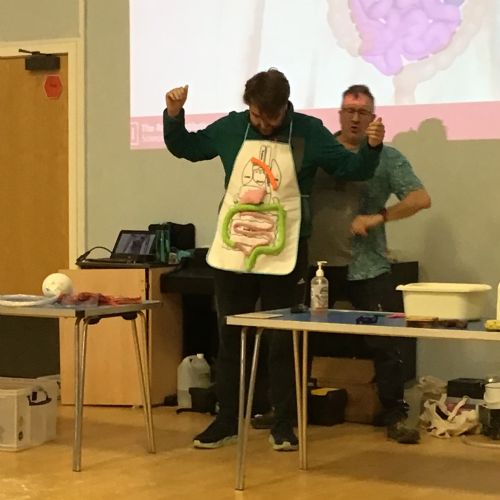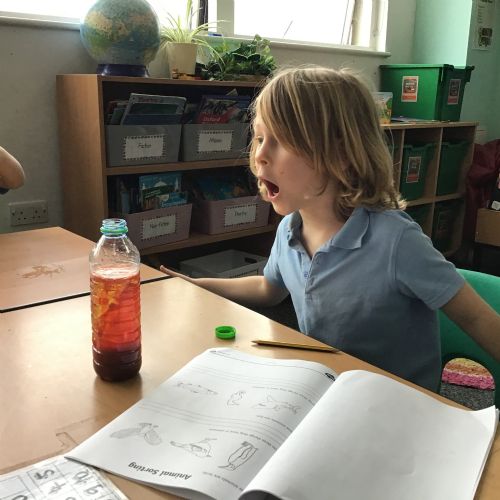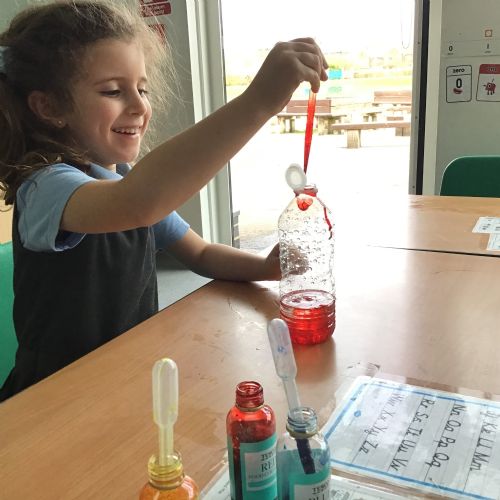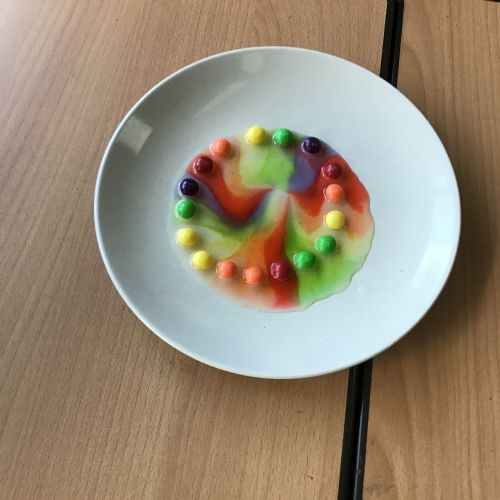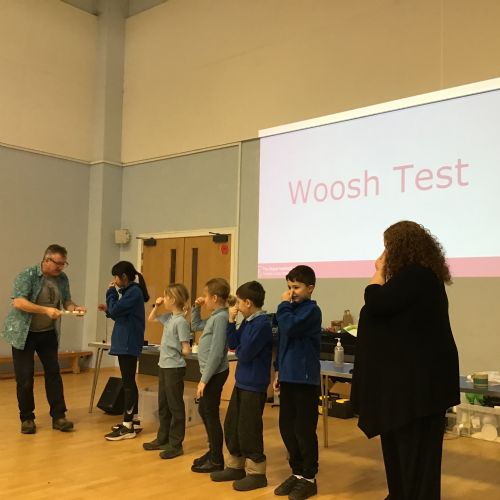Science
Intent
At the Queens’ Federation we aim to foster ‘Learning for Life.’
We will provide a rich, relevant and inspirational curriculum that promotes a lifelong love of learning and equips our pupils with the key knowledge and understanding, skills and personal qualities that they will need to thrive in a rapidly changing world. Our curriculum is designed to be relevant to our children and is linked to the context of our school and the local community.
At the Queens’ Federation, it is our aim to provide a high quality science curriculum that provides pupils with a strong understanding of the world around them whilst acquiring specific skills and knowledge to help them think scientifically and develop scientific enquiry skills. Our curriculum will enable pupils to become enquiry based learners collaborating through researching, investigating and evaluating a wide range of experiences.
Pupils will be encouraged to understand how science can be used to explain what is occurring, predict how things will behave and analyse causes. It will provide opportunities for the critical evaluation of evidence and rational explanation of scientific phenomena as well as opportunity to apply wider curriculum knowledge to their understanding of science, including collecting, presenting and analysing data. Pupils will be immersed in scientific vocabulary, which supports the acquisition of scientific knowledge and understanding.
Implementation
Encouraging children to ask questions, allowing them to indulge their curiosities and build on their abilities to find scientific answers by both logical enquiry and keen observation is at the heart of teaching and learning in science at the Queens’ Federation. Scientific enquiry skills are embedded into each topic that the pupils study. Topics are revisited and developed throughout their time at school allowing pupils to build upon their prior knowledge and increase their understanding of all areas of science.
At the Queens’ Federation, our science curriculum is enriched through the use of cross-curricular links which make learning purposeful and relevant. We endeavor to provide regular on and off site science related experiences and provide opportunities to learn outdoors where appropriate, making learning relevant to our local area. We further supplement our curriculum with engaging science events and by utilising experts from within the local and wider community.
We view assessment as a holistic process, which takes place in every lesson through observation of, in questioning and in conversation with pupils and in the production of written outcomes. Science assessment criteria set out the key knowledge and skills that a pupil should achieve at the end of each unit of work.
Impact
At the Queens’ Federation pupils will develop a sense of excitement and curiosity about science. Our curriculum provides them with the necessary skills and knowledge to become young scientists and builds foundations for understanding the world that they can take with them once they complete their primary education. Pupil outcomes evidence a broad and balanced science curriculum and at the end of each year, pupils achieve age related expectations and retain the knowledge and skills learnt from each unit of work.
Yearly Overview
| Autumn 1 | Autumn 2 | Spring 1 | Spring 2 | Summer 1 | Summer 2 | |
|---|---|---|---|---|---|---|
| Y1 |
Everyday Materials Seasonal Changes |
Seasonal Changes Space |
Animals, including Humans: Animals Seasonal Changes |
Animals, including Humans: Animals Seasonal Changes |
Plants |
Animals, including Humans: The Human Body / The Five Senses Seasonal Changes |
| Y2 | Animals including humans |
Uses of Everyday Materials |
Living things and their habitats | Living things and their habitats | Plants | Plants |
| Y3 | Animals including humans | Rocks |
Forces and Magnets |
Animals, including Humans - Nutrition |
Light | Plants |
| Y4 | Animals including humans | Sound |
States of Matter |
Electricty | Living Things and Habitats |
Living Things and Habitats |
| Y5 | Forces |
Earth and Space |
Living things and their habitats | Animals including humans |
Properties and Changes of Materials |
Properties and Changes of Materials |
| Y6 | Light | Electricity | Living things and their habitats |
Evolution and Inheritance |
Animals including humans |
Animals including humans |
Pupil Voice
The Science lead did a pupil voice session with a selection of SEND pupils to hear their thoughts on Science at Queen Emma.
“I loved doing Space Day where we had to order the planets. I can remember all of them because we came up with a rhyme. It was so fun to do a whole day of Science and not be interrupted by any other lessons. I liked colouring in the planets.”
“This is my work where we learnt about animals that eat meat and eat leaves. My teacher helped me cut out the animals.”
Examples Of Learning
Year 5 have embraced their new Science topic of ‘Materials and their Properties.’ Initially we investigated materials and their properties, deciding which material would be suitable for a specific purpose. We then became investigators, carrying out an experiment to find out which materials made the best electrical conductors and insulators. We revisited our learning from Year 4 and created an electrical circuit before making a break in the circuit. A variety of materials were then placed in the circuit. We found out that metals were electrical conductors, allowing the electricity to pass through the circuit, making the light bulb light up!
Y4 children were given a 'mystery mixture' containing solids and liquids. They were provided with a range of equipment to separate the mixture, but had to predict which item would be best to separate each material. Once they had made their predictions, they had a go at doing this in their groups! As they started to separate the materials, they found more mystery materials in the bottom of the mixture!
Year 1 launched into learning about Space by visiting the Wonder Dome. It was a fantastic immersive experience and we journeyed through the galaxy with our Year 1 friends!
During Science, Year 4 have been learning about states of matter. They had a go at sorting out objects into categories including 'natural', 'man-made', 'solids' and 'liquids'. The children enjoyed discussing a range of questions such as 'Are all liquids colourless?'; 'Can you spill a solid?' and 'What happens if you tilt the container a liquid is in?'. They have written a range of questions that they also want to find out during this topic.
During their recent studies about ‘The Skies Above My Eyes,’ Year 5 took on the role of scientists and presented findings to each other to discover whether the earth was flat or spherical. Evidence to support the theory that the Earth was spherical included the fact that planes fly around the world and nobody has ever reported finding the ‘edge’ of the world, observations of the shadow cast by the Earth on the moon and the fact that travelers and sailors all see different constellations of stars wherever they are in the world. Evidence to support the theory that the earth was flat included the ancient Chinese belief that the Earth was a flat square surrounded by heavens that were a round egg shape. After much discussion, our Year 5 scientists concluded that they followed the belief that the Earth was approximately spherical rather than flat!
Year 5 have been investigating and explaining the cycles of the moon. Year 5 already know that it takes the moon approximately 28 days to orbit the Earth. There are eight phases of the moon and the different phases that we see are when the moon is in different points of its orbit. Creating sliders to show the cycles of the moon, Year 5 could demonstrate and name … new moon, waxing crescent, first quarter, waxing gibbous, full moon, waning gibbous, third quarter and a full moon.
We have been looking at circuits in science. With our previous knowledge of materials, we hypothesized which item (paper clip, zipper and wool) would conduct electricity best, and then went on to test other classroom items. Well done for working together!
Taking on the role of scientists, Year 5 investigated the effects of water resistance. Using three playdough shapes – a cube, a sphere and a cone, we first predicted which would fall the fastest and the slowest to the bottom of a measuring cylinder filled with 500ml of water. We discussed and shared our ideas, predicting that the cone would fall the fastest as it was the most streamlined shape and had a pointed end to cut through the water. After our investigation, we found out that the cone actually fell the slowest! We believed though that this was because the cone flipped and fell to the bottom of the cylinder sideways, creating more resistance. If we could have made the cone fall with the point, pointing to the bottom of the cylinder at all times, we think we may have had different results!
In Science, we have been exploring offspring and life cycles. This week, we looked more closely at the life cycle of a butterfly and the children used resources to create their own life cycle wheels using plates, paper and pasta.
Ms Halliwell (the school Science co-coordinator) had a fantastic afternoon walking round the school to see all the amazing Science that is going on at Queen Emma. So many classes had working wall Science displays show casing their current learning full of rich Science vocabulary.
In Year 5 they were looking at air resistance in their forces topic and changed various variables. They then launched their parachutes off the top of the atrium to time their parachutes falling to the ground. In Year 3 they have been learning about the human body and bones. The pupils wrote out different bones of the body on post it notes and made a human skeleton on one of their friends. If you ever break a bone you need to see pupil’s in Year 3! Reception had a topical Science display all about Autumn with questions and resources to ignite the children’s learning.
As part of our learning about forces, Year 5 investigated air resistance by making and testing parachutes. Working in pairs, we made three parachutes, changing one variable each time. We could change the size or shape of the parachute, the height of the drop or the object attached to the parachute. We then predicted which parachute would create the most air resistance and which would fall the slowest. Come and ask us if our predictions were correct!
Queen Emma had a fantastic day when Gareth from ‘The Royal Institute of Science’ came into school and did a whole day based around the theme of ‘Explosive Food’ during British Science Week. He did a show for Key Stage 1 and Key Stage 2 where the children learnt a vast array of things such as all about how powerful our tongues are with their taste buds, why we should be eating more insects in our diet, how flammable jelly babies are and a disgusting and immersive look into our digestive system.
All classes then spent the day taking part in a variety of Science experiments including making lava lamps, removing dye from skittles, flower experiments, food chains and jelly babies dissolving in a variety of solutions.
In the evening Gareth then held a community show for all the families within the federation which was based upon ‘Rockets.’ This was full of fire and explosive experiments and it was fantastic to see so many of our families attend this brilliant event.
There was a real buzz around the school during the day and it was a super event that many of the children will remember in the future.

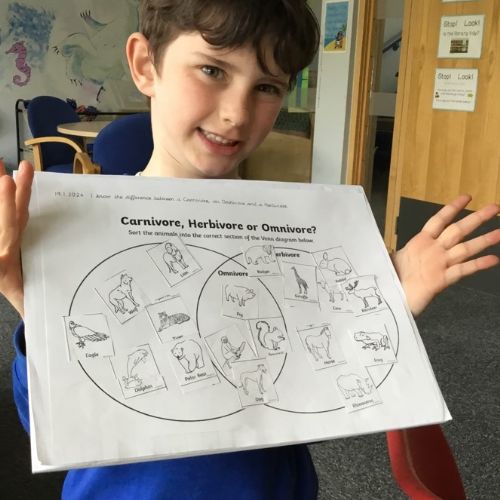
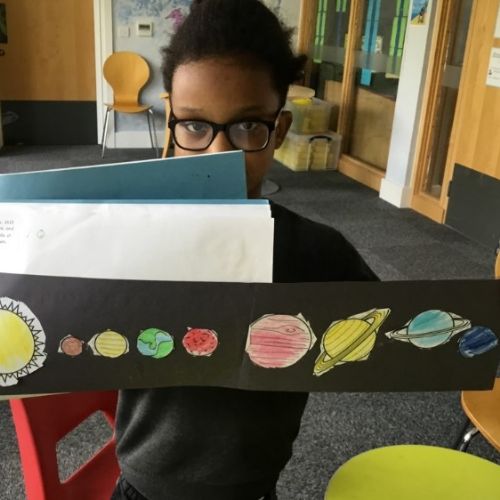
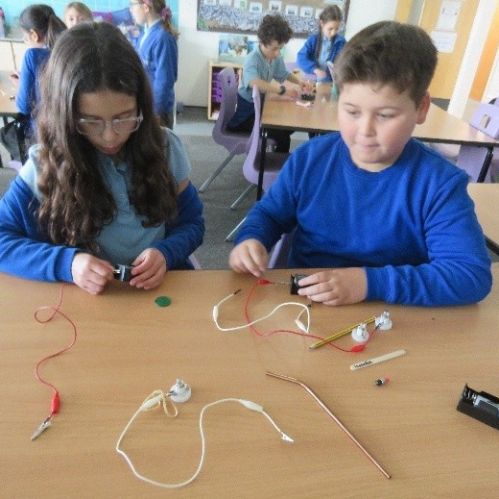
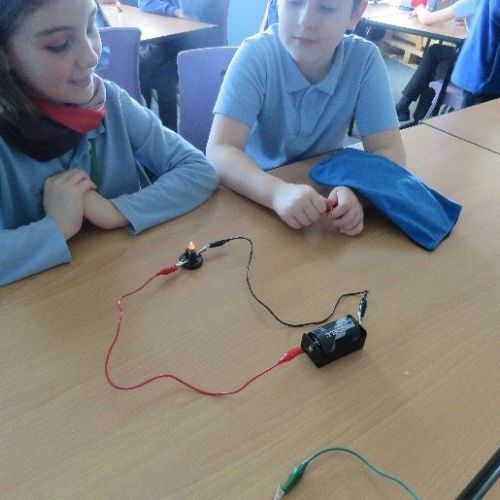
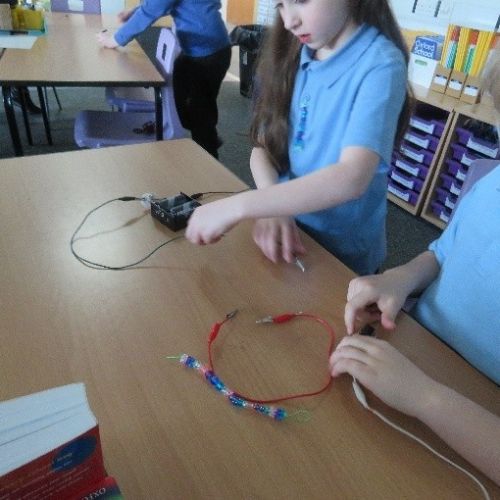


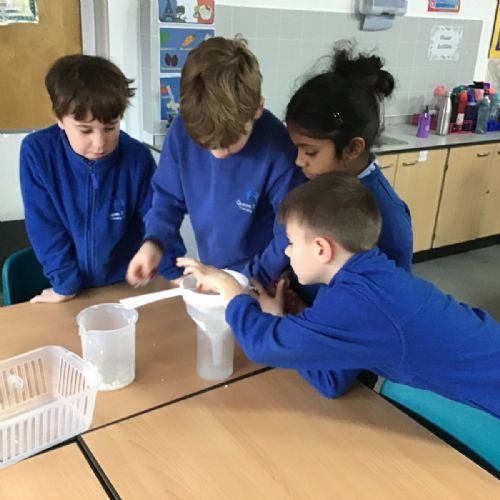
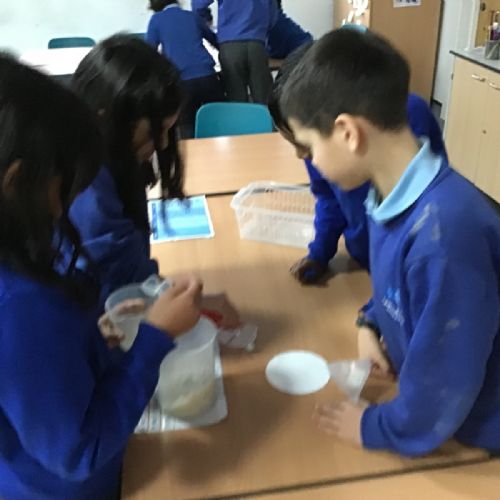
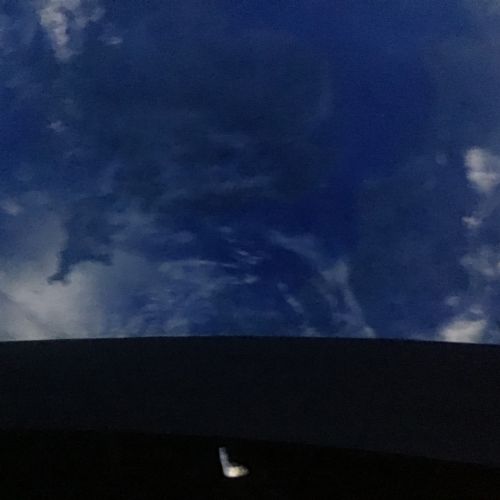
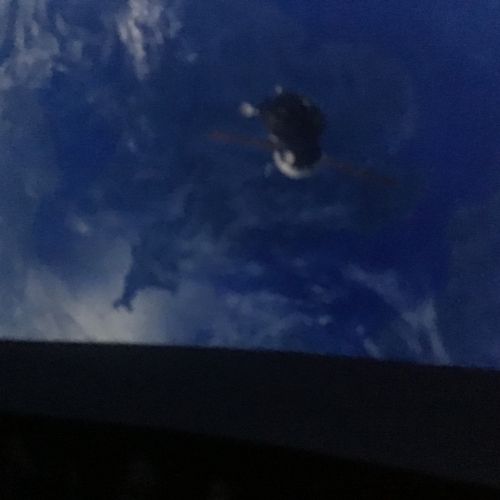
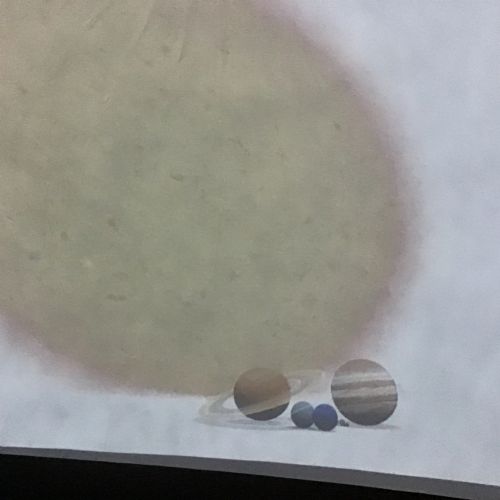
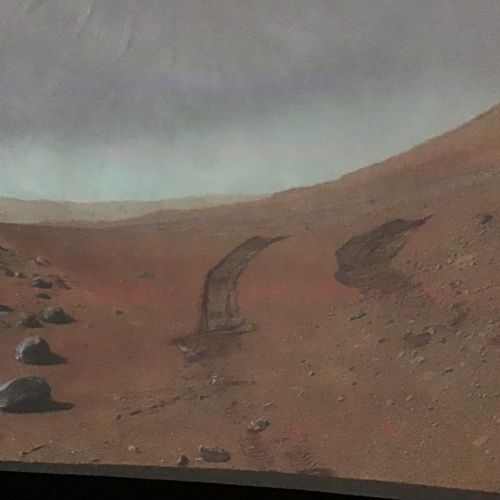
.jpg)
.jpg)
.jpg)
.jpg)
.JPG)
.JPG)
.JPG)
.JPG)
